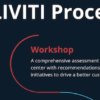Many companies have moved from on-premises IT infrastructure to cloud-based IT solutions, and they’re reaping the benefits of making that transition. Call center cost savings are always a big win. Other significant advantages include lower maintenance costs, friendlier billing options, more robust security, and improved customer service.
Organizations that haven’t yet made that move risk falling behind. In addition to the competitive pressure, the promise of cost savings also puts pressure on their IT departments to switch to cloud-based XaaS solutions. The lure of reducing their network tower spend is considerable.
Research firm Gartner’s latest study on Global IT Spending predicts that companies will spend $3.9 trillion in 2020. The area of biggest growth will be in cloud-based solutions. Gartner notes:
“Last quarter, we introduced the ‘and’ dilemma where enterprises are challenged with cutting costs and investing for growth simultaneously. Maturing cloud environments is an example of how this dilemma is alleviated: Organizations can expect a greater return on their cloud investments through cost savings, improved agility and innovation, and better security. This spending trend isn’t going away anytime soon.”
However, there’s a problem when it comes to making the move to XaaS from legacy systems. Over the years, many companies have built an incredibly complex network tower. Typically, it might include data and voice networks, edge network infrastructure, collaboration solutions, wireless connectivity, internet of things spend (IoT), and security.
There are many stakeholders and often few individuals (if anyone) who knows the architecture, the processes, and the systems involved from end to end. This raises the question: how can you make the move to the cloud when you’re not entirely certain what systems and functions your current infrastructure supports? How are you going to ensure there is no disruption to any part of your business without this critical information? How can you expect to convince a CIO, CEO or board to move forward with the project without these details?
The solution is to perform a current state analysis. This is a critical document for any IT project and serves as an invaluable starting point. The current state analysis clearly identifies every business unit that is relying on technology in the network tower, which of those services it uses, and how it uses them.
It identifies interdependencies. It will also identify the existing pain points with the current technology — crucial information when it comes to convincing senior leadership to sign off on proceeding with a cloud project. Think of it as an audit that uncovers everything about how things currently work.
ACLIVITI offers valuable expertise in both business operations and technology. We are a neutral third party that can untangle the complexity of your legacy systems, and also produce the current state analysis. From that starting point, our APEX Technology Value Rationalization (TVR) framework uses a data-driven approach to finding the right XaaS services. APEX employs proven, fact-based scoring. With it, ACLIVITI will help you build a business case that accounts for all of the business stakeholders, the pain points of legacy systems, transparency on current network tower spend, and the opportunities offered by specific XaaS solutions.
If your company hasn’t yet embraced the cloud, get ready for the request to come through your CIO, because it’s just a matter of time. And when the call comes, don’t do anything until you have that current state analysis completed.
Learn More About CCaaS












